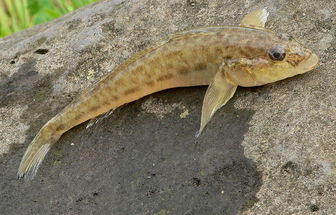Monkey goby
Because of the Rhine-Main-Danube Canal, Neogobius fluviatilis could expand his habitat.

Original source: Own work Author viridiflavus Camera location
Author: viridiflavus Camera location
Monkey goby, other invasive species pose threat to Great Lakes = Last Updated: Thursday, January 8, 2009 | 10:32 AM ET The Associated Press Dozens of foreign species could spread across the Great Lakes in coming years despite policies More
populations of the monkey goby (Apollonia fluviatilis), which is the sister species of the round goby (A. melanostomus) that invaded the Great Lakes from the Ponto-Capsian region of Eurasia. More
The Monkey Goby Invades Lake Michigan! Invasive Species Alert! (Pics) = by Adam Shake · 10 comments monkey goby The Monkey Goby Invades Lake Michigan! Invasive Species Alert! (Pics) The waters off the beaches of Toledo, Ohio; Gary, Ind. More
Monkey goby is one cute fish, but it's a threat to the Great Lakes November 15, 2002 - The monkey goby is so cute that Europeans have taken to growing the fish in garden ponds. More
the monkey goby competes with other small fish for food and space. • Other threats: Three recent studies have identified more than two dozen species likely to enter the Great Lakes. Other fish of concern include the European perch and Black Sea silverside. More
been identified that the monkey goby can survive in our environment and it has a potential to outcompete local species. More
monkey goby was poor in variability - it was composed only of Chironomid species (larvae and 1 pupa) and Copepods. The same poor variability was in the diet composition of big-head goby, with the dominancy of Amphipods. More


Original source: FishBase
-FAO -Author: FAO
Permission: Some rights reserved
Family : Gobiidae
Genus : Neogobius
Species : Neogobius fluviatilis
Authority : Pallas, 1814
